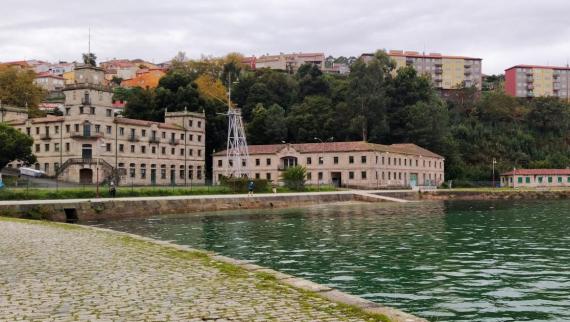History
The IIM-CSIC has been a reference for marine research in Spain, and particularly in Galicia, for 70 years.
Since its foundation as one of five coastal labs belonging to the National Institute of Fisheries Research (Instituto de Investigaciones Pesqueras; IIP-CSIC), the IIM-CSIC has evolved throughout the years, adding new research lines, widening its scope, creating stronger connections with its community and with other institutions, and adapting to any new social challenges that arose.
After these seven decades of marine research, the history of the IIM is as alive as ever. New generations of professionals and exciting prospects of change ensure that this story is still far from its end, with upcoming chapters that will shape the future of marine research in Galicia and worldwide.
The current IIM-CSIC began its journey in the building of the former German School of Vigo as the "Vigo Coastal Laboratory” belonging to the National Institute of Fisheries Research (IIP-CSIC).
The implementation of the Coastal Laboratory in Galicia responded to the great development experienced by the fishing sector and by the seafood processing industry in the region since the 1940s. Thus, the IIM-CSIC’s initial research lines focused on the study of fishery resources to respond to the needs of both the extractive and the processing industries. In fact, one of the first publications by the Vigo Coastal Laboratory (March 1952) referred to the "sardine crisis" that was gripping the fishing sector and the canning industry at the time.
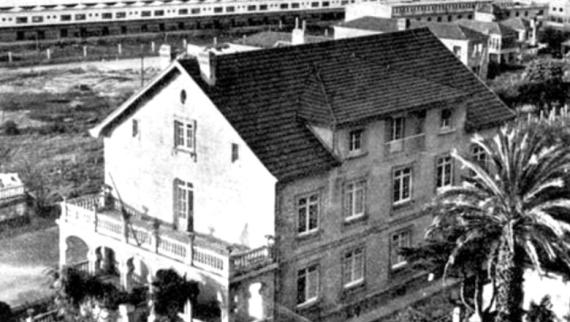
During this decade, R. Margalef and B. Andreu continued the study of sardine population dynamics and published one of the first papers related to oceanography and fisheries in 1958.
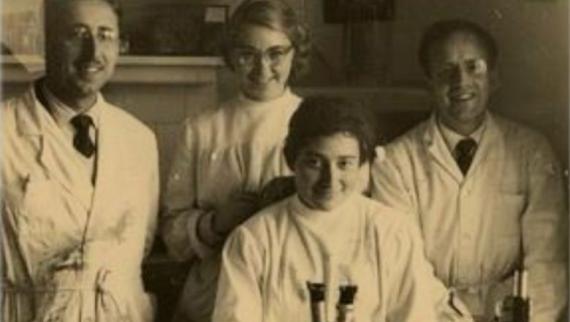
In 1961, the IIM-CSIC was forced to move to another location at Beiramar Avenue in Vigo because the German government reclaimed the German School.
During the following years, the laboratory gained international relevance. Fernando Fraga took on Margalef's oceanography studies and, in 1964, became the first Spanish oceanographer to publish on the well-recognized journal Deep Sea Research, where he presented his findings on the role of dissolved organic matter in the nitrogen cycle.
Also during this decade (1966), Manuel G. Larrañeta was invited onto Pescanova's factory vessel Galicia on its expedition to Southern Africa's hake fishing grounds, which kick-started a research line on deep sea fisheries, still active to this day.
The intense activity of the IIM-CSIC on the study of bivalve dynamics, particularly the studies carried out by A. Figueras Monfort and B. Andreu, led to its active participation in the development of the first Galician Shellfishing Plan, which was approved by the government in 1970 (RD 1238/1970).
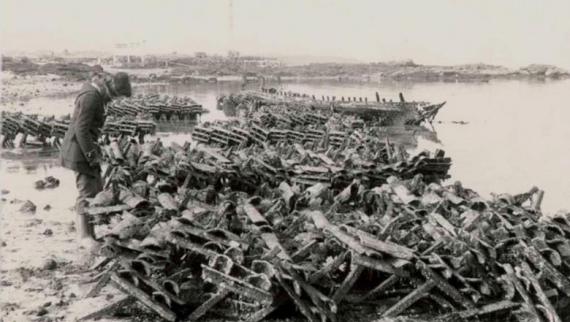
In 1973, the Institute finally settled in the Bouzas neighborhood, its home until the present day. The new building, designed by Desiderio Pernas, enabled new infrastructures such as a pilot plant for seafood processing designed by HERMASA.
In 1978, the IIM-CSIC gained autonomy from the IIP-CSIC and changed its name to the Institute of Fisheries Research of Vigo to respond to the demands of the fisheries sector for decentralized institutions to meet the research needs of their activities.
At that time, the Institute was structured into 6 research groups: Oceanography, Estuarine Systems, Fisheries Biology, Marine Biochemistry, Chemistry of Marine Products and Technology of Fishery Products.
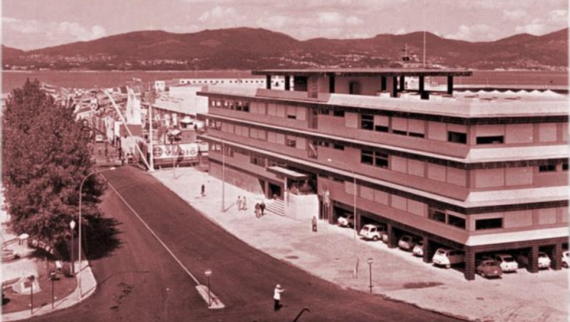
New research lines and groups were created during this decade, thus diversifying the scope of the Institute and helping to consolidate the initial research lines while also exploring new fields of study.
As an example, in 1988, the IIM-CSIC started participating in the Flemish Cap fishery expeditions, which are still ongoing nowadays.
Although the fisheries research line remained active and open, the emergence of new research interests in oceanography, food technology, aquaculture, pathobiology and ecology called for a change.
In May 1986, the Institute of Fisheries Research of Vigo (Instituto de Investigaciones Pesqueras de Vigo) took its current name, the Institute of Marine Research (or Instituto de Investigacións Mariñas - CSIC), in order to reflect its multidisciplinary nature and its holistic vision about the research of marine ecosystems.
The IIM-CSIC was becoming a reference for marine research. The recognition of the advances made by Fernando Fraga in oceanographic research and marine chemistry made him the first researcher of the IIM-CSIC to become a member of the Royal Galician Academy of Science (1987).
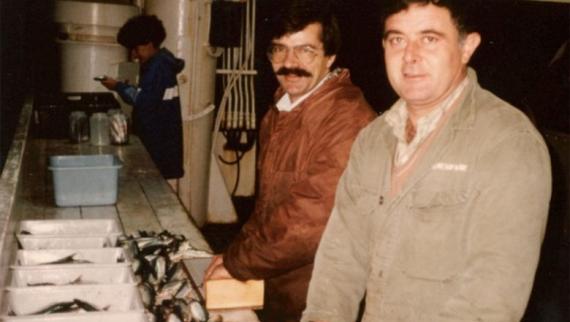
The progressive growth of the IIM-CSIC called for the expansion and adaptation of its infrastructures to the new needs. In 1993, the main building was expanded with an annex building adapted for experimentation with aquatic organisms.
These new infrastructures, together with the consolidation and recognition of certain research lines, such as bivalve pathobiology, led to the establishment of the National Reference Laboratory in Bivalve Mollusc Diseases in the Institute in 1995. Led by A. Figueras, the laboratory is still in charge of assessing the hazard index for certain diseases affecting bivalve molluscs in Spain and coordinating their detection efforts with other European laboratories of the same nature.
During this decade, aquaculture studies intensified with the purpose of not only optimizing traditional aquaculture but also developing aquaculture techniques for new species, such as octopus, which is still a core research line at IIM-CSIC.

The IIM-CSIC's commitment to address society’s challenges became clear during the Prestige oil spill in 2002, when the efforts of all the research groups at the IIM-CSIC focused on evaluating the consequences both for the marine ecosystem and for fishing and aquaculture resources, as well as designing bioremediation measures and predicting the oil spill’s drift and impacts.
During this decade, the first projects exclusively dedicated to public engagement with marine research (Divulgamar, Ciencia na Escola) began to emerge, paving the way for the introduction of the Ocean Literacy concept, which currently constitutes a transversal axis for the IIM-CSIC’s activities.
In line with social changes brought on by the turn of the century, in 2006, the direction of the IIM-CSIC was led by a woman, Aida Fernández Ríos, for the first time in the history of the Institute.

In 2015, Aida Fernández Ríos became the third woman to become a member of the Royal Galician Academy of Sciences (RAGC) because of the relevance of her studies on the relationship between anthropogenic carbon dioxide emissions and ocean acidification.
During this decade, the institute continued to stand out because of the multidisciplinary nature of its research, which allowed for an integral and global understanding of marine ecosystems towards innovative and sustainable ways to use their resources: from the ocean to the table.
The IIM also defined its current organization, structured in four departments: (1) Oceanography, (2) Ecology and Marine Resources, (3) Biotechnology and Aquaculture and (4) Food Science and Technology, which include 14 highly interconnected research groups, enabling the support of research and innovation across many different fields.
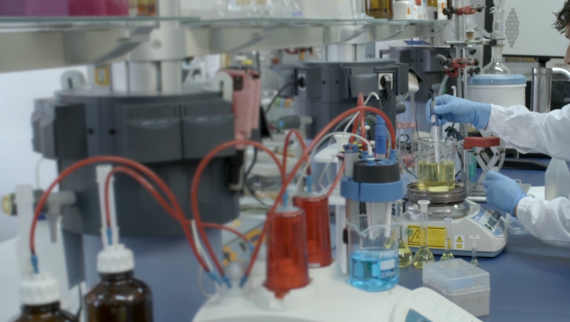
The IIM-CSIC once again rose up to meet the requirements of society in times of crisis, such as the COVID-19 pandemic. As an example of its multidisciplinary capacity, the IIM-CSIC participated in the development of techniques for predicting the incidence of COVID-19 through the analysis of wastewater at sewage treatment plants at the peak of the pandemic. Nowadays, it coordinates the Complementary Plan for Marine Sciences in Galicia, which intends to respond to the economic recovery needs after this situation through innovation in marine sciences, which will also provide our society with resilience mechanisms in the face of future challenges.
Recognition of the role of the IIM-CSIC in marine research came in 2021 with two new admissions into the Galician Royal Academy of Science: Fiz Pérez joined the RAGC in September 2021 thanks to his studies on the ocean carbon cycle and the impact of global change. In November 2021, Isabel Medina also became a member of the RAGC due to her prestigious work on the study of the effects of seafood on human health.

Innovation and the use of cutting-edge technologies is marking this new decade at the IIM-CSIC. The use of state-of-the-art omic techniques, the development of low-cost technologies for ocean monitoring, artificial intelligence, digital twins, etc. are opening new paths of collaboration not only with different fields of knowledge, but also with different industries and with the general society.
The IIM is currently developing a major project: the conception, design and construction of a new headquarters in an emblematic place in the Ría de Vigo, a former military base that used to host the ETEA (School of Transmissions and Electricity of the Navy), in the Teis neighborhood. This will allow the institute to grow and to interact with other research centers located in the area in the future. For this reason, the intention of the IIM is for the new location to become a international reference site for marine research, fostering the transfer of technology to the sectors involved and promoting the dissemination of marine sciences to society at the local, regional, national and international levels.
